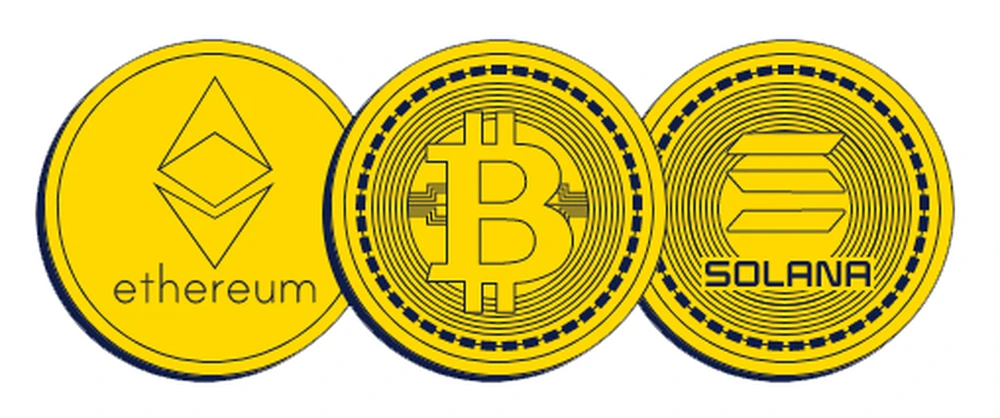Web 3.0, also known as the next phase of the internet, is a concept that represents the evolution of the internet into a more decentralized, interconnected, and user-centric ecosystem. It envisions a future where individuals have greater control over their data, and where trust, transparency, and privacy are prioritized. Web 3.0 leverages emerging technologies such as blockchain, artificial intelligence (AI), Internet of Things (IoT), and decentralized finance (DeFi) to transform how we interact, transact, and engage with digital services.
In Web 3.0, the traditional centralized model of the internet is replaced by decentralized networks that empower users to directly interact with each other, eliminating the need for intermediaries. Blockchain technology plays a crucial role in Web 3.0 by enabling secure and transparent transactions, smart contracts, and decentralized applications (dApps). It allows for the creation of digital assets and tokens that can represent ownership, value, or access to specific services within the network.
Investing in Web 3.0 presents unique opportunities and challenges. As the ecosystem continues to grow, investors can participate in various ways. They can invest in cryptocurrencies that serve as the native currencies of Web 3.0 platforms, such as Bitcoin (BTC) and Ethereum (ETH). These cryptocurrencies are used for transactions, staking, and governance within decentralized networks.

Definition and concept of Web 3.0
- Decentralization: Web 3.0 aims to reduce reliance on central authorities and intermediaries by leveraging blockchain technology and decentralized protocols. This decentralized approach promotes greater transparency, security, and privacy.
- Semantic Web: Web 3.0 aims to make web content more understandable by computers, enabling enhanced data interoperability and meaning. This involves the use of metadata, ontologies, and linked data to create a web of interconnected information that can be easily processed and understood by machines.
- Interoperability: Web 3.0 seeks to establish seamless interoperability between different platforms, applications, and devices. This allows for the efficient exchange of data, services, and assets across the internet.
- Smart Contracts: Web 3.0 introduces smart contracts, which are self-executing agreements with predefined rules and conditions. These contracts are built on blockchain platforms like Ethereum and enable automated and trustless transactions without the need for intermediaries.
- Data Ownership and Control: Web 3.0 emphasizes giving users more control over their personal data. Through decentralized identity systems and data storage solutions, individuals can maintain ownership of their data and choose how and when to share it with third parties.
- Enhanced User Experience: Web 3.0 envisions a more personalized and immersive user experience. This includes advancements in virtual and augmented reality, artificial intelligence, and the Internet of Things, enabling more interactive and contextually relevant online experiences.
- Personalization and Contextualization: Web 3.0 emphasizes personalized and contextualized experiences for users. By leveraging artificial intelligence (AI), machine learning (ML), and user data, the web can provide tailored content, recommendations, and services based on individual preferences and context.
- Open Data and Open APIs: Web 3.0 promotes open data standards and interfaces, allowing different applications and platforms to seamlessly exchange and integrate data. This encourages innovation and collaboration among developers and fosters interoperability between systems.
Also read: Best Web3 Games of 2023 : Play-to-earn and Walk-to-earn!
Importance and benefits of Web 3.0
Web 3.0 is an emerging paradigm of the internet that brings several important benefits and offers significant advantages over its predecessors. Here are the importance and benefits of Web 3.0:
- Enhanced Privacy: Web 3.0 introduces improved privacy features, allowing users to have better control over their personal data. With Web 3.0 technologies like blockchain and cryptographic protocols, individuals can selectively share their information, ensuring privacy and reducing the risk of data breaches.
- Trust and Security: Web 3.0 leverages blockchain technology to enhance trust and security. By utilizing decentralized networks and consensus mechanisms, Web 3.0 applications can mitigate the risk of fraud, tampering, and unauthorized access. This increased trust and security create a more reliable and robust online environment.
- Interoperability: Web 3.0 aims to enable seamless interoperability among different platforms and applications. This means that data and services can be shared and utilized across various decentralized applications (dApps), creating a more connected and integrated digital ecosystem.
- Empowerment of Individuals: Web 3.0 empowers individuals by giving them more control over their online experiences. Users can directly engage in peer-to-peer interactions, transact securely, and participate in decentralized governance models. This shift towards user-centricity fosters inclusivity, autonomy, and greater user agency.
- Innovation and Disruption: Web 3.0 opens up avenues for innovation and disruption across various industries. With decentralized technologies, new business models, such as decentralized finance (DeFi), non-fungible tokens (NFTs), and decentralized applications, can emerge, transforming traditional sectors like finance, supply chain, healthcare, and entertainment.
- Economic Opportunities: Web 3.0 presents new economic opportunities for individuals and businesses. Through tokenization and decentralized marketplaces, users can participate in the ownership and value creation of digital assets. Web 3.0 also enables microtransactions, allowing for new revenue models and monetization strategies for content creators and developers.
Understanding the Investment Landscape of Web 3.0
The investment landscape of Web 3.0 is rapidly evolving and includes various sectors and opportunities. Here are some key areas and investment trends within the Web 3.0 space:
- Cryptocurrencies and Tokens: Cryptocurrencies, such as Bitcoin and Ethereum, play a central role in Web 3.0. These digital assets enable decentralized applications (dApps) and smart contracts. Investing in cryptocurrencies involves buying and holding tokens as an investment strategy. Additionally, initial coin offerings (ICOs) and token sales provide opportunities to invest in promising blockchain projects.
- Blockchain Infrastructure: Web 3.0 relies on blockchain technology as its backbone. Investing in blockchain infrastructure involves supporting projects that develop blockchain protocols, consensus mechanisms, scalability solutions, and interoperability frameworks. These investments can include blockchain platforms, middleware, and development tools.
- Decentralized Finance (DeFi): DeFi refers to financial applications built on blockchain networks that aim to provide traditional financial services in a decentralized and transparent manner. DeFi protocols facilitate lending, borrowing, decentralized exchanges, yield farming, and other financial activities. Investing in DeFi involves participating in liquidity pools, yield farming, and investing in DeFi tokens.
- Non-Fungible Tokens (NFTs): NFTs are unique digital assets that represent ownership or proof of authenticity of a particular item, such as artwork, collectibles, or virtual real estate. Investing in NFTs involves acquiring and trading these digital assets, participating in NFT marketplaces, and supporting NFT-based projects.
- Web 3.0 Applications: As Web 3.0 evolves, various dApps are being developed across industries such as decentralized social networks, decentralized storage, decentralized identity, gaming, supply chain, and more. Investing in Web 3.0 applications involves identifying promising projects and supporting their development and adoption.
- Privacy and Data Ownership Solutions: Web 3.0 aims to empower users with increased control over their data and privacy. Investing in privacy and data ownership solutions involves supporting projects that develop decentralized identity systems, data storage and management solutions, and privacy-focused protocols.
- Venture Capital and Startups: Web 3.0 has attracted significant venture capital funding, with investors actively seeking promising startups and projects in the space. Investing in Web 3.0 startups involves identifying early-stage companies with innovative ideas and potential for disruption, and providing funding and support during their growth stages.
Risks and challenges in investing in Web 3.0
Investing in Web 3.0, the decentralized and blockchain-based version of the internet, comes with its own set of risks and challenges. While Web 3.0 has the potential for significant innovation and disruption, it’s important to consider the following risks before making investment decisions:
- Regulatory Uncertainty: The regulatory landscape surrounding Web 3.0 technologies is still evolving. Different jurisdictions may have varying approaches to blockchain, cryptocurrencies, and decentralized applications (DApps). Regulatory changes or restrictions could impact the value and adoption of Web 3.0 projects.
- Volatility and Speculation: Cryptocurrencies, which often underpin Web 3.0 projects, are known for their price volatility. Investments in Web 3.0 may be subject to significant price fluctuations, which can lead to substantial gains or losses. Speculative behavior and market manipulation can also affect prices in the crypto space.
- Technological Challenges: Web 3.0 is built on complex technologies like blockchain, smart contracts, and decentralized networks. While these technologies offer advantages, they also bring technical challenges. Issues such as scalability, interoperability, security vulnerabilities, and governance mechanisms can impact the success of Web 3.0 projects.
- Adoption and User Experience: User adoption is crucial for the success of any technology. Web 3.0 applications often require users to understand and interact with new concepts like private keys, wallets, and decentralized exchanges. The user experience of Web 3.0 applications is still relatively complex compared to traditional web applications, which may hinder mainstream adoption.
- Project Viability and Competition: The Web 3.0 space is highly competitive, with numerous projects vying for attention and investment. It can be challenging to identify which projects have sound fundamentals, strong development teams, and viable use cases. Some projects may fail to deliver on their promises or face stiff competition, which could impact their long-term viability.
- Security Risks: While blockchain technology offers enhanced security features, Web 3.0 is not immune to security risks. Smart contract vulnerabilities, hacking attempts, and weaknesses in decentralized networks can result in financial losses or disruptions to the functioning of applications.
- Market Maturity and Liquidity: Web 3.0 is still in its early stages, and the ecosystem is evolving rapidly. The market may lack maturity, with limited liquidity and price discovery mechanisms for certain tokens or assets. This can make it challenging to enter or exit positions at desired prices, potentially impacting investment strategies.
As with any investment, it’s crucial to conduct thorough research, understand the risks involved, and carefully evaluate individual projects before making investment decisions in the Web 3.0 space. Diversification and consulting with financial professionals can help mitigate some of these risks.
Investing in Web 3.0: Strategies and Approaches
Here are some strategies and approaches to consider when investing in Web 3.0:
- Research and Education: Start by gaining a solid understanding of Web 3.0 technologies and how they work. Familiarize yourself with blockchain, cryptocurrencies, decentralized platforms, and their potential applications. Stay updated on the latest developments, projects, and trends in the Web 3.0 space. This knowledge will help you make informed investment decisions.
- Diversification: As with any investment strategy, diversification is crucial. Web 3.0 offers a wide range of investment opportunities, including cryptocurrencies, tokens, blockchain platforms, and DeFi protocols. Diversify your investments across different projects, sectors, and asset classes to mitigate risk and maximize potential returns.
- Invest in Established Projects: Look for reputable and well-established Web 3.0 projects with a strong track record and community support. Bitcoin and Ethereum are examples of established projects that have gained significant adoption and have a proven track record. Investing in these projects can provide exposure to the broader Web 3.0 ecosystem.
- Identify Promising Startups: Keep an eye out for promising startups and early-stage projects that have the potential to disrupt traditional industries or solve real-world problems. Conduct thorough due diligence on the team, technology, and market potential before investing in these projects. Participate in token sales or consider venture capital opportunities in the Web 3.0 space.
- Participate in Decentralized Finance (DeFi): DeFi has emerged as a popular sector within Web 3.0, offering various financial services and applications without intermediaries. Explore decentralized lending platforms, decentralized exchanges (DEXs), yield farming, and liquidity provision opportunities. However, be aware that DeFi investments can be highly volatile and carry additional risks.
- Governance Tokens: Many Web 3.0 projects have native governance tokens that grant holders voting rights and the ability to shape the project’s direction. Research and invest in governance tokens of projects you believe in and actively participate in their communities. However, exercise caution as governance tokens can be subject to regulatory scrutiny and their values may fluctuate significantly.
- Stay Updated on Regulatory Developments: Web 3.0 technologies and cryptocurrencies are still evolving, and regulatory frameworks are still being developed. Stay informed about regulatory developments and compliance requirements in your jurisdiction. Compliance with regulations can help mitigate risks associated with legal and regulatory uncertainties.
- Long-Term Vision: Web 3.0 technologies are still in their early stages, and the ecosystem is rapidly evolving. Have a long-term investment perspective and be prepared for volatility and market fluctuations. Focus on projects that have a strong vision, robust technology, and solid fundamentals that align with your investment objectives.
Investing in Web 3.0 Stocks
Investing in Web 3.0 could take several forms:
- Cryptocurrencies: Investing directly in cryptocurrencies like Bitcoin and Ethereum is one way to invest in Web 3.0. These digital currencies are inherently part of the Web 3.0 infrastructure.
- Blockchain Companies: Consider investing in companies that are developing blockchain technologies or are heavily using blockchain as part of their operations.
- Decentralized Finance (DeFi): DeFi platforms use blockchain technology to provide financial services like lending, borrowing, and trading without the need for traditional banks. Investing in these platforms or in their native tokens can be an investment in Web 3.0.
- Non-Fungible Tokens (NFTs): NFTs are unique digital assets that are stored on a blockchain. They can represent digital art, music, games, and more. Investing in NFTs is another potential way to invest in Web 3.0.
- Exchange-Traded Funds (ETFs): There may be ETFs available that include companies involved in blockchain technology and other aspects of Web 3.0.
- Venture Capital: Some investors may choose to invest in start-ups or smaller companies that are working on Web 3.0 technologies.
Identifying key Web 3.0 companies and their stock performance
Here are a few major public companies focused on Web 3.0 and their recent stock performance:
- Coinbase (COIN): Coinbase is one of the largest cryptocurrency exchanges in the US. COIN stock is down around 75% over the past year as cryptocurrencies have slumped.
- Microstrategy (MSTR): Microstrategy has significantly invested in Bitcoin and is considered a bellwether for the cryptocurrency. MSTR is down around 65% in the last year.
- Robinhood (HOOD): Robinhood offers crypto trading among other financial services. HOOD stock is down around 70% in the past year as trading activity has cooled off.
- Block (SQ): Previously known as Square, Block has a large bitcoin holding and offers crypto services. SQ stock is down around 50% in the past year.
- Meta (META): Meta (formerly Facebook) is investing heavily in its metaverse vision. META stock is down around 60% in the past year on slowed user growth and metaverse uncertainty.
- Roblox (RBLX): Roblox is a popular gaming platform also venturing into the metaverse. RBLX stock is down around 60% in the past year on revenue deceleration.
- Nvidia (NVDA): As a major producer of GPUs, Nvidia benefits from the increased demand for graphics processing power needed for crypto mining and 3D rendering. It is also involved in developing virtual reality and AI capabilities critical for the Metaverse. However, its business depends on the broader semiconductor industry cycles.
- AMD (AMD): Similar to Nvidia, AMD supplies GPUs for crypto mining and hardware to support virtual worlds. It has partnerships with Meta and Microsoft for the Metaverse. But AMD faces competition from Intel and Nvidia in the GPU space.
- Microsoft (MSFT): Through acquisitions like Activision Blizzard, Microsoft aims to build an expansive Metaverse gaming platform. It also provides cloud and networking infrastructure crucial for distributed ledgers. However, the Metaverse remains speculative and faces challenges around standards adoption.
- Block (SQ): As a payments processor, Block aims to integrate Bitcoin and facilitate digital asset transactions. Its Cash App also allows bitcoin trading. Block would benefit from widespread crypto adoption but faces uncertainty around regulatory changes.
Investing in Web 3.0 Cryptocurrencies
There are several cryptocurrencies that are an integral part of the Web 3.0 ecosystem such as Ethereum, Solana, and Bitcoin.

These native coins are associated with blockchain networks that power decentralized applications in Web 3.0. Investing in top cryptocurrencies that have been around the longest and have strong adoption is considered a safer investment compared to newer coins with unknown developers and limited usage. However, all cryptocurrency investments are highly volatile and risky given the speculative nature of the sector. It is advisable to only allocate a small portion of one’s portfolio (around 5-10%) to cryptocurrency holdings.
Another approach for investing in Web 3.0 cryptocurrencies is through cryptocurrency lending platforms and staking. Plaforms such as YouHodler allow investors to stake or lend out holdings of major cryptocurrencies to earn interest. By staking coins, investors are essentially allowing their coins to be used by the blockchain network tovalidate transactions and in return they earn rewards in the form of more coins. However, it is important to carefully review the staking rates, locks and conditions of different platforms as promises of outsized returns may not be sustainable. Overall, investing in Web 3.0 requires a long term vision and willingness to stomach volatility as the technology continues to develop.
Investing in Web 3.0 NFTs
Non-fungible tokens (NFTs) allow people to invest in unique digital assets on the blockchain. NFTs can represent any asset, including digital artwork, music, videos, and more. Similar to physical art collecting, investing in rare and creative NFTs can potentially yield high returns. However, the NFT market is highly speculative and volatile. Most NFT projects end up failing, resulting in investors losing their money. It’s important to do thorough research on any NFT project before investing, including checking the credentials of the team, use case or utility of the NFTs, token distribution, community and hype, and if any reputable investors are involved. Looking at metrics like the number of unique owners can also help evaluate the potential of an NFT project.
When choosing NFTs to invest in, experts recommend allocating only a small portion (5% or less) of one’s total cryptocurrency portfolio to speculative assets like NFTs. Starting with well-known collections from established artists and brands can mitigate risks compared to investing in new or unknown projects. Purchasing NFTs from projects that already have real-world use cases instead of just being sold on the promise of future utilities also makes for less risky investments. Storing valuable NFTs in secure blockchain wallets, rather than exchanges, ensures the investor maintains ownership. Regularly reviewing one’s NFT portfolio is important to sell off any underperforming assets.
Angel investing in Web 3.0 projects
Angel investing has become one of the most popular ways for individuals to invest in early-stage Web 3.0 projects. As these projects are still in their infancy, starting with angel investing allows individuals to fund promising ideas and concepts at a ground level. Many Web 3.0 startups get their initial funding from angel investors who believe in the project and want to see it succeed. Angel investors can invest directly in startups through equity financing or purchasing tokens associated with decentralized autonomous organizations (DAOs). Due diligence is important when selecting early-stage Web 3.0 projects to invest in as an angel, as there is greater risk compared to more established companies. Sources suggest looking at the credentials of the founding team, viability of the idea, use of funding, and exit strategy as factors to evaluate potential projects.
Once an early-stage Web 3.0 project has been identified to invest in, angels go through a structured funding process. This often involves drafting and negotiating legal documents like a Simple Agreement for Future Tokens (SAFT). The terms will specify details such as the pre-money valuation, investment rights, and vesting schedule. Successful angel investments in breakout Web 3.0 companies could yield substantial returns for early shareholders in the form of stock payouts or token price appreciation as the platform gains users. However, there is no guarantee of success and some funded projects may fail. By diversifying investments across several ventures, angel investors can help fuel innovation in the emerging Web 3.0 space.
Participating in Initial DEX Offerings (IDOs) or Initial Coin Offerings (ICOs)
Initial DEX offerings (IDOs) and initial coin offerings (ICOs) allow investors to get involved with new cryptocurrency projects at their earliest stages. With an IDO or ICO, a company or organization launches a new cryptocurrency or token and makes it available for public purchase. This serves as a way for the company to raise capital for development. IDOs typically take place on decentralized exchanges, while ICOs can be held on centralized platforms as well. It’s risky for investors as many new projects fail, but those that succeed can provide very large returns if the coin appreciates greatly in value. Investors need to do thorough research on projects to evaluate their potential and assess the risks involved before participating in an IDO or ICO.
They need to review documents like the white paper, understand the team and advisors involved, evaluate whether there is true innovation or usage for the coin, and check for any history or reputation of the founders. It’s also essential that investors only allocate a very small part of their portfolio to higher risk IDO and ICO investments. While they provide potential for large gains, one should be prepared to lose entire investments as well. The key is maintaining a diversified portfolio and only investing amounts one can afford to lose in these very early stage and uncertain crypto projects.
Key Considerations for Investing in Web 3.0
Conducting thorough research and due diligence
Before investing in any project or company in the developing world of Web3, it is important to do extensive research and conduct thorough due diligence. This includes understanding the project’s mission and vision, its team and advisors, the technology used, the roadmap, competitive landscape, risks etc. It is also important to study similar projects, read whitepapers, talk to community members and experts to understand opportunities and pitfalls. Web3 is an evolving space and scams and rug pulls are common, so due diligence plays a key role in weeding out non-genuine projects and making well-informed investment decisions.
Understanding the technology behind Web 3.0
Web3 is underpinned by innovative blockchain technology like smart contracts, decentralized applications (Dapps), non-fungible tokens (NFTs) etc. A solid understanding of how technologies like cryptocurrencies, tokens, blockchain, distributed ledger systems work will help investors gauge a project’s potential and long-term viability. It will also allow them to identify aspects like level of decentralization, scalability, interoperability etc. Studying new and emerging technologies that power the world of Web3 is important for investors looking for the next big opportunity.
List of key technologies behind Web 3.0:
- Blockchain
- Cryptocurrencies – Bitcoin, Ethereum, etc.
- Smart Contracts
- Decentralized Applications (Dapps)
- Decentralized Finance (DeFi) Protocols and Applications
- Non-Fungible Tokens (NFTs)
- Distributed Storage – IPFS, Swarm, Filecoin, Sia
- Distributed Computing – Dfinity, Golem, iExec
- Decentralized Organizations (DAOs)
- Sidechains and State Channels
- Zero-Knowledge Proofs
- Multichain Interoperability Protocols – Polkadot, Cosmos, Chainlink
- Decentralized Identity (DID)
- Digital/Crypto Wallets
- Peer-to-Peer Networks
- Secure Payment Systems – Paypal, Venmo, Square etc.
- Cryptographic Protocols – Encryption, Signatures, Hashes etc.
- Decentralized Data Storage
- Artificial Intelligence and Machine Learning
- Virtual Reality and Augmented Reality
- The Metaverse – Virtual worlds and ecosystems
Assessing market trends and regulatory landscape
- Identify dominant trends impacting your industry/sector – this could include shifts in customer preferences, new technologies, social/economic trends, etc. Analyze how these trends are evolving and where they may be headed.
- Track competitors – understand what products/services competitors are offering, how their offerings are evolving, their strategies and initiatives. This will help identify gaps and opportunities.
- Research new regulations/policies – stay on top of any changes to laws, standards, guidelines that impact your industry/sector. Understand requirements and timelines for compliance. Regulations can open up new opportunities or constrain existing business models.
- Analyze demand drivers and inhibitors – what external factors are driving or hindering demand in the market? This could include macroeconomic indicators, costs of raw materials, trade policies etc.
- Consult with industry bodies and regulators – leverage insights from industry associations, regulators on emerging trends and regulatory expectations. They often signal policy direction.
- Gather market and customer insights – use surveys, focus groups, feedback to understand changing customer segments, needs, preferences. Check if offerings need to evolve.
- Develop monitoring/scouting tools – setup tracking mechanisms like analysts subscription, news alerts, LinkedIn groups to stay updated on latest developments.
The idea is to understand dynamics in the external environment to spot opportunities, threats and plan strategies that are aligned with market direction and compliance needs. Regular reviews help course-correct business goals as needed.
Diversifying investment portfolio in Web 3.0
Just like any other investment portfolio, it is prudent to diversify in the emerging Web3 sector as well. This means not putting all eggs in one basket, i.e. not investing entirely in one project, currency or sector. Diversification helps reduce project or market-specific risks. Investors can consider diversifying across different categories like crypto tokens, NFTs, Web3 startups, investment trusts etc. Diversifying within an asset class by investing in multiple tokens/coins of different market caps is also important for mitigating risks in the highly volatile Web3 market.
Risks and Challenges in Web 3.0 Investments
Investments in this space also carry significant risks and uncertainties which investors should be aware of:
Volatility and market fluctuations in Web 3.0
Coin prices and valuations of crypto assets and blockchain projects have historically demonstrated wide volatility, often changing drastically within short periods of time. For example, the price of Bitcoin dropped over 50% in early 2022. Such fluctuations make valuation and returns difficult to predict. Web 3.0 remains an emerging industry and highly speculative in nature with low barriers to entry, leading to fluctuations.
Security risks and potential scams
As with any emerging technology, there is potential for various security risks and scams in the crypto and blockchain ecosystem. Some projects might not have proper security safeguards and controls. Popular methods of attack include hacking exchanges, phishing, rug pulls and exit scams. Investors need to verify the legitimacy and security track record of any project before investing.
Regulatory uncertainties and legal considerations
The decentralized nature of Web 3.0 means various regulatory issues remain unaddressed. Regulations around crypto and blockchain are still evolving. Certain activities like ICOs are now regulated or banned in some jurisdictions. Unclear regulations pose legal risks for both investors and projects. Future regulations may also impact the viability of some business models.
Technical challenges and scalability issues
Major scaling and performance challenges remain in the areas of blockchain technology, decentralized applications, cryptocurrency networks and other core Web 3.0 protocols. Technical glitches and downtimes are common. Protocols need to demonstrate long term scalability while maintaining security and decentralization to gain mainstream adoption.
Future Outlook and Potential of Web 3.0 Investments
Growth prospects and emerging trends in Web 3.0
- Web 3.0 is expected to drive further decentralization of the internet through technologies like blockchain, distributed ledgers, peer-to-peer networks etc. This will make users’ data, identity and digital ownership more portable and secure.
- Immersive experiences through augmented and virtual reality are likely to become mainstream applications in Web 3.0. This will blur the lines between digital and physical worlds.
- Artificial intelligence and machine learning will play a much bigger role in Web 3.0 by powering highly personalized experiences and automation. AI assistants may become common.
- The creator economy is poised to grow exponentially as user-generated content and commerce platforms in Web 3.0 allow creators to monetize their work more directly using tokens, royalties etc.
- Blockchain adoption will increase across sectors to facilitate digital ownership of assets via NFTs, streamline supply chains, enable digital identities and more. Play-to-earn gaming is an emerging trend.
Impact of Web 3.0 on various industries
- Social media and digital platforms will likely transition to a decentralized business model leveraging open protocols. User data ownership and privacy will increase.
- Digital payments and fintech will integrate more tightly with decentralized currencies and blockchain-based smart contracts for payments, lending, insurance and asset/wealth management.
- Digital content businesses like media, entertainment and education can explore new monetization models and engage audiences better through immersive experiences.
- E-commerce and retail will transform through personalized experiences, social shopping, virtual/AR try-ons and new fulfillment models leveraging distributed ledgers.
- Important sectors like government, healthcare and agriculture can leverage the trust and transparency of blockchain/Web 3.0 to increase efficiency and reduce costs.
Expert opinions and insights on Web 3.0 investments
- Top VC firms are investing heavily in promising Web 3.0 startups focusing on areas like decentralized applications, digital identity, blockchains, NFTs, metaverse etc.
- Industry leaders like Jack Dorsey, Mark Zuckerberg and others have acknowledged Web 3.0 potential and are integrating relevant technologies into their plans and products.
- Analysts believe Web 3.0 presents a massive opportunity for early investors in protocols, platforms and innovative applications. Successful investments could yield high returns.
- However, it is still an evolving space with technical, regulatory and adoption risks. Experts advise thorough due diligence and diversification across projects and strategies. Patience may be required.
Conclusion
Recap of key points and strategies for investing in Web 3.0
Web 3.0 represents the next generation of the internet, powered by blockchain and decentralized technologies. For investors looking to get exposure to this emerging space, there are a few important strategies. First, it’s crucial to understand the core technologies that underpin Web 3.0 such as blockchain, cryptocurrencies, smart contracts, NFTs and decentralized applications. With this foundation, investors can then consider allocating funds to different asset types like major blockchain protocols that networks are built on. Ethereum, Solana and Polygon are some top protocols to research. Bitcoin and Ethereum’s cryptocurrencies are also important long-term holdings given their market dominance currently. Additionally, investors can keep an eye out for promising new decentralized applications across sectors like gaming, social media and finance that are pushing the boundaries of what can be built on blockchain. Diversification across different Web 3.0 asset classes and doing thorough research is advised to help manage risks in this novel and fast-moving sector.
Importance of staying informed and adapting to the evolving Web 3.0 landscape
The Web 3.0 economy is an emergent space that is constantly evolving at a rapid pace. The technologies, projects, and players in this emerging decentralized internet are changing all the time as innovation accelerates. In these dynamic conditions, it is incredibly important for investors to remain informed of the latest trends and developments in order to stay ahead of the curve. The Web 3.0 landscape does not remain static – new architectures, protocols, and applications are arising while others decline. Investors that are not proactively following online discussion forums, research publications, and industry conferences risk having an outdated view of the ecosystem. Their strategies may focus on areas that are no longer as promising. To maximize returns and minimize risks, investors must adapt to these shifting conditions by reevaluating projects and shifting allocations based on new information. Only those who are committed to continuously learning about innovations and changes in the Web 3.0 marketplace will positioned themselves to best capitalize on both short-term opportunities and powerful long-term trends as they develop.













